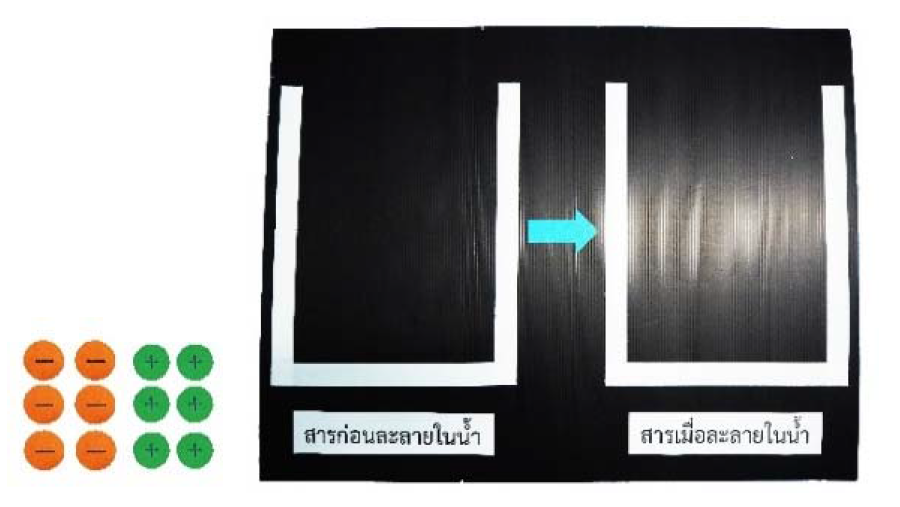Open inquiry and using physical model: Grade 11 students’ conceptual understanding on acids and bases dissociation
Main Article Content
Abstract
Using an open inquiry and a physical model has been defined as student-centered learning. Students draw a hypothesis from the problem that the teacher determines, design procedures, analyze and draw their conclusion. The physical model was used in data interpretation process to promote students’ conceptual understanding. The purpose of this research was to investigate students’ conceptual understanding learned through open inquiry- based instruction and using physical model of acid and base dissociation. Participants were 26 grade 11 students in Khon Kaen province. Data from the conceptual understand test was collected before and after implementing an intervention and analyzed as a percentage. The research finding was summarized as follows: students in sound understanding (SU) categories increased 21.15%, partial understanding (PU) categories increased 14.42% , partial understanding with specific alternative conceptions (PS) categories decreased 1.92%, specific alternative conceptions (SA) categories increased 6.73% and no understanding (NU) categories decreased 40.38% after learning.
Article Details
The Journal of Science and Science Education (JSSE) retain the right of all articles published in JSSE. The coresponding author or the authorized person on behalf of the authors must send the complete Copyright Transfer Form to JSSE before any article get published in JSSE.
Copyright Transfer Form
The JSSE request the coresponding author or the authorized person on behalf of the authors upload the manuscript under the together with the Copyright Transfer Form under the supplementary data. The guidline for uploading both manuscript and Copyright Transfer Form is shown below:
1. Upload the manuscript in the sub-menu, Article Component > Article Text.
2. Upload the the Copyright Transfer Form in the sub-menu, Article Component > Other.
Download Copyright Transfer Form
References
สำนักงานวิชาการและมาตรฐานการศึกษา. (2553). ตัวชี้วัดและสาระการเรียนรู้แกนกลางกลุ่มสาระการเรียนรู้วิทยาศาสตร์ ตามหลักสูตรแกนกลางการศึกษาขั้นพื้นฐานพุทธศักราช 2551. กรุงเทพฯ: โรงพิมพ์ชุมนุมสหกรณ์การเกษตรแห่งประเทศไทย จำกัด.
Banchi, H. and Bell, R. (2008). The Many Levels of Inquiry. Science and Children, 46(2), 26-29.
Bell, L. R., Smetana, L. and Binns, I. (2005). Simplifying inquiry instruction: Assessing the inquiry level of classroom activities. The Science Teacher, 72(7), 30–33.
Beyza, K. B. (2013). Using two-tier test to identify primary students’ conceptual understanding and alternative conception in acid base. Mevlana International journal of education, 3(2), 19-26.
Bruce, A. T. (2015). Pre-experimental research designs. Quasi-experiment research designs, 29-75.
Buck, L. B. , Bretz, S. L. and Towns, M. H. ( 2008) . Characterizing the level of inquiry in the undergraduate laboratory. Journal of College Science Teaching, 38(1), 52-58.
Çalik, M. and Ayas, A. (2005). A comparison of level of understanding of eighth-grade students and science student teachers related to selected chemistry concepts. Journal of Research in Science Teaching, 42(6), 638-667.
Chiu, M. H. (2007). A national survey of students’ conceptions of chemistry in Taiwan. Chemical Education International, 29, 421-452.
Cullen, D. M. and Pentecost, T. C. (2011). A model approach to the electrochemical cell: An inquiry activity. Journal of Chemical Education, 88(11), 1562-1564.
Doymus, K. , Karacop, A. and Simsek, U. ( 2010) . Effects of jigsaw and animation techniques on students’ understanding of concepts and subjects in electrochemistry. Educational Technology Research and Development, 58, 671-691.
Demirciolu, G. , Ayas, A. and Demirciolu, H. (2005) . Conceptual change achieved through a new teaching program on acids and bases. Chemistry Education Research and Practice, 6, 36–51.
Halstead, S. E. (2009). A critical analysis of research done to identify conceptual difficulties in acid-base chemistry. Master of Science Dissertation. KwaZulu-Natal, South Africa: University of Kwazulu-Natal, Pietermaritzburg.
Justi, R. and Gilbert J. K. (2002). Models and modeling in chemical education. In J. K. Gilbert, O. D. Jong, R. Justi, D. F. Treagust, J. H. VanDriel, (Eds.), Chemical Education: Towards Research Based Practice, (pp. 47–68). Dordrecht: Kluwer Academic Publishers.
National Research Council. (2012). A framework for k-12 science education: Practices, crosscutting concepts, and core ideas. Washington, DC: The National Academies Press.
Osman, K. and Sukor, N. S. (2013) . Conceptual understanding in secondary school chemistry: A discussion of the difficulties experienced by student. American Journal of Applied Sciences, 10(5), 433-441.
Pedaste, M., Mäeots, M., Siiman, L. A., de Jong, T., van Riesen, S. A., Kamp, E. T., Manoli, C. C., Zacharia, Z. and Tsourlidaki, E. (2015). Phases of inquiry-based learning: Definitions and the inquiry cycle. Educational research review, 14, 47-61.
Sheppard, K. ( 2006) . High school students’ understanding of titrations and related acid- base phenomena. Chemistry Education Research and Practice, 7(1), 32-45.
Supasorn, S. (2015). Grade 12 Students’ conceptual understanding and mental models of galvanic cells before and after learning by using small- scale experiments in conjunction with a model kit. Chemical Education, 16, 393-407.
Treagust, D., Chittleborough, G. and Mamiala, T. (2003). The role of submicroscopic and symbolic representations in chemical explanations. International Journal of Science Education, 25(11), 1353-1368.
Treagust, D. , Won, M. and Chandrasegaran A. L. ( 2016) . High school students’ understanding of acid-base conception: An ongoing challenge for teacher. International Journal of Environmental and Science Education, 11(1), 9-27.


